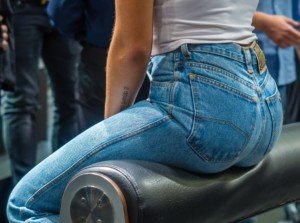
Pain in your butt and hip that’s especially accompanied by tingling or numbness is usually a condition called piriformis syndrome; here’s treatment that will bring you relief.
Strengthen the Piriformis Muscle
When the piriformis muscle (located in the rump) becomes tight, it’s prone to spasms.
This can then lead to it pressing upon the sciatic nerve, causing pain in your bottom and sometimes hip as well, not to mention the tingling and numbness.
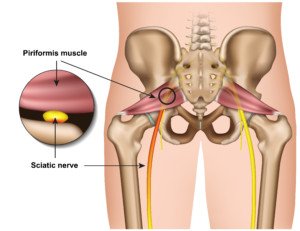
Shutterstock/medicalstocks
Below are three stretches. Hold each one for 30 seconds, 3-4 sets each. Do not pull so much that the stretch hurts. Instead you should feel a gentle pulling, rather than forceful.
The first piriformis stretch is shown three times, with each time increasing in difficulty.
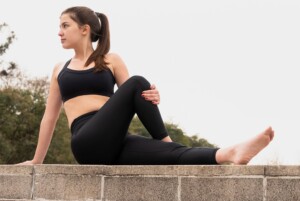

Freepik.com

Freepik.com/yanalya
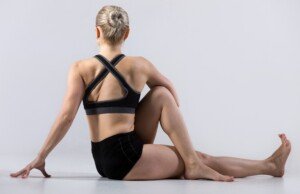
Freepik.com/yanalya

Freepik.com/yanalya
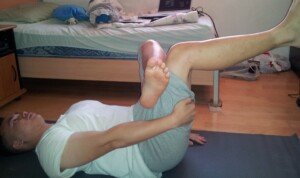
Kpa1563, CreativeCommons
• Lie on your back, with the leg on the painful side crossed over opposite knee, both legs bent.
• Pull the knee that’s not crossed towards chest or shoulder.
Additional Treatment for Relief of Butt and Hip Pain, Tingling
You may want to apply a heat pack or a cold/ice pack—either one may provide relief, though most people find the heat pack far more tolerable.
Consider a professional massage a few times a week. It need not exceed 30 minutes per session.
Magnesium May Relax Tight Muscle that Causes Butt and Hip Pain
“Magnesium deficiency leads to muscles that are less relaxed and more susceptible to spasm and tension,” points out Carolyn Dean, MD, ND, and medical advisory board member of the Nutritional Magnesium Association.
Dr. Dean says that 80 percent of the population is deficient in magnesium.
“Without enough magnesium the body is unable to metabolize potassium and deliver it to cells,” adds Dr. Dean.
“Magnesium assists over 700 enzyme actions including production and transport of energy and the synthesis of protein, while it also relaxes the muscles.”
So far I’ve explained passive ways to treat piriformis syndrome, but let’s face it, you really should also start exercising if you’ve been sedentary.
Sedentary people can start with a brisk, arm-pumping walk on a treadmill (do not hold on) or outdoors.
Inside your house you can do body-weight squats, stationary or walking lunges, side-to-side lunges and side-to-side high knee raises.
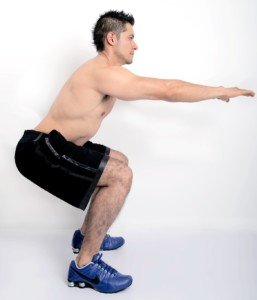
Squat
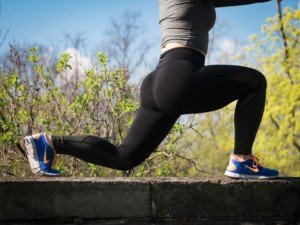
Lunge
Go gently and if you can only do a few at a time, then do a few at a time. Avoid exercises that make the pain in your butt or hip worse.
If you’re sore the next day, that means you did a good job.
If you belong to a gym, start using a leg press machine. Start light, keep feet flat on the platform, and bend legs so that the angle is smaller than 90 degrees. Do eight to 12 reps, three sets.
Sit in the “hip abduction machine” and go. Set the weight light enough to allow as much range of motion as you can open your legs, but enough to make you feel you’re working the butt. Do 8-12 reps, three sets.
Also you may want to take up yoga.
Butt & Hip Pain Not Responding to Treatment
There’s still hope. See what your doctor can do for treatment. For example, Botox injections will help reduce muscle spasms.
Don’t jump at narcotic drugs; these can have many side effects and only mask the symptom.
They do not help heal. However, your doctor may recommend a corticosteroid or anesthetic injection which may last many weeks.
You can also try chiropractic treatment or acupuncture. Try every conservative treatment possible before you begin asking about surgery, which is a last resort option.
Prevent Butt and Hip Pain from Piriformis Syndrome
• If any exercises or stretching minimizes the problem, keep doing these.
• For any exercise, practice good form. As a former personal trainer I witnessed so many people execute poor form doing barbell squats, deadlifts and – believe it or not – walking on the treadmill.
• If you use a treadmill, DO NOT HOLD ON. Doing so alters natural gait, adding unnecessary stress to the hips, and this can have a ripple effect down the leg.
• How many times have you heard to wear good-supporting shoes? Bad-fitting shoes can mess with posture.
Good posture, including while sitting, is crucial for prevention of piriformis syndrome.












